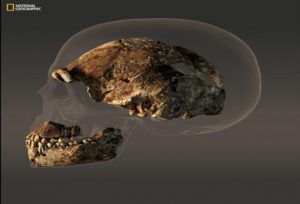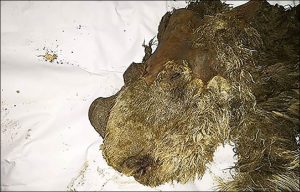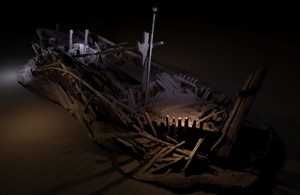Top 5 Archaeology News of the past 3 years
Archaeology news always brings sensation. This is even more exciting when new species is discovered. In the past year alone, archaeologists have made some amazing discoveries. They even discovered an unknown species of Human Race.
Here are 5 of the most exciting Archaeology news of the past year
 Dinosaur fossil found in Texas
Dinosaur fossil found in Texas
During a fossil hunting in Texas with his father, Wylie Brys, 5, fell on a bone. Not any bone, but that of an old dinosaur about 100 million years. The unlikely discovery took place last September 2015, but it would take the scientists at Southern Methodist University (SMU) in Dallas months before they could obtain the necessary permits to unearth the skeleton.
This amazing archeological discovery happened by hazard. Months ago, father and son went to Mansfield, an area accommodated to welcome future shopping centers. The duo hope to find fossils of fish on the ground once buried underwater during Jurassic era. But they found some things far more precious, dinosaur bones.
After analysis, the archeologists believe the dinosaur belonged to the family of Nodosaurus, herbivorous dinosaurs the size of large horses, that lived Cretaceous period in North America. Nodosaurus was one of the first armored dinosaurs to be discovered in North America.
The fossil was taken to the Southern Methodist University using a protective case made of burlap and plaster. While the skeleton would be cleaned and assembled by a few scientists, a group of archeologists have continued their research on the site until constructions of the future building resume. As of today, they have made no major other discovery.
 Unknown species of Human Race
Unknown species of Human Race
This was the most exciting Archaeology news of 2015. Homo naledi, an extinct species believed to be of the genus Homo was discovered in 2015. It was too amazing at first for scientist to believe it.
On September 10, Lee Rogers Berger and his team announced the discovery of the new human species in South Africa. Hands, wrists and feet of the Homo naledi are close to those of modern man, while the brain (smaller) and the upper body are similar to those of Australopithecus, another extinct hominin genus in Africa.
The fossils were found in a deep cave, which makes access extremely difficult. The discovery of this new human species was made near Johannesburg, on the very rich archaeological site known as the “cradle of humanity”, a UNESCO World Heritage Site.
1.5 meters 45 kilos
Measuring about 1.5 meters and weighing 45 kilos, the Homo naledi “had a tiny brain, about the size of an orange and a very slender body,” said John Hawks, a researcher at the University of Wisconsin-Madison.
The hands “suggests that they had the ability to use tools,” the fingers were extremely curved, while “it is virtually impossible to distinguish their feet to those of a modern man,” states John Hawks. Their feet and long legs suggest the species was made for long walk.
 Giant Salamander Metoposaurus Algarvensis in Portugal
Giant Salamander Metoposaurus Algarvensis in Portugal
Fossil bones found at the site of an ancient lake in Portugal belonged to a previously unknown species of a kind of giant salamander resembling a crocodile that was among the largest predators in the world about 220 million and 230 million years ago.
Called “metoposaurus algarvensis”, these terrible predators who could reach two meters long, lived contemporaneously with the first dinosaurs. The species was contemporary of the first dinosaurs and the beginning of their dominance that lasted more than 150 million years, explained the scientists whose discovery was published in the Journal of Vertebrate Paleontology.
The metoposaurus algarvensis was part of a larger group of primitive amphibians that were common in low latitudes between 220 and 230 million years ago, pointed out the researchers. These amphibians also formed part of the ancestors whose descending modern amphibians such as frogs and newts.
These creatures, which had a distant kinship with salamanders today, could reach two meters long and lived in lakes and rivers in the late Triassic like today’s crocodiles, feeding mainly on fish.
 Woolly Rhinoceros Found for the first time in Siberia
Woolly Rhinoceros Found for the first time in Siberia
This archaeology news came out last year. The woolly rhinoceros (Coelodonta antiquitatis) is a species of rhinoceros that had lived throughout Europe and northern Asia before they went extinct 1000s of years ago. In 2015, some archeologists would make an amazing discovery.
The remains of a baby woolly rhino were recently found frozen in the permafrost in Siberia. This is the first time this species has ever been found as of today. Scientific analysis reveals that the animal was 18 months old when it died about 10 000 years ago. The sample found includes wool of the animal, as well as one ear, the nose, an eye, skull and mouth.
The finding is significant since it is the first of this kind that a baby ever uncovered so far. The woolly rhinoceros, also known as rhinoceros with partitioned nostrils, is a specimen that has populated the cold lands of Eurasia nearly 30,000 years ago during the Pleistocene, the period that started 1.8 million years ago and lasted until about 11,700 years ago.
Scattered Bones of this species had been discovered on several occasions but never specialists were able to study the remains of such a young specimen. Hence the opportunity offered by the baby found along the bank of a river located in the Republic of Sakha, in northeastern Siberia.
The remains, preserved in ice for many thousands of years, have survived the test of time and is remarkably well preserved for scientists to conduct different types of tests.
 40 shipwrecks discovered in the depths of the Black Sea
40 shipwrecks discovered in the depths of the Black Sea
More than 40 mysterious shipwrecks have been found in the depths of the Black Sea this month (October 2016). This is the most recent archeological news so far.
A team of scientists, equipped with some of the most advanced technologies for underwater archaeology, found the shipwrecks while on other mission.
The researchers have analyzed their structure and shape in order to determine their origin. Analysis has revealed the mysterious ships are linked to the Ottoman and Byzantine Empires. But the no conclusion has been reached yet. More research will be conducted to determine with precision when these wrecks occurred and which period they date back to. This archeological news sheds more light on the connections that existed between the communities around the Black Sea many years ago.
“The ship wrecks are a complete bonus, but a fascinating discovery, found during the course of our extensive geophysical surveys. They are astonishingly preserved due to the anoxic conditions – absence of oxygen – of the Black Sea below 150 metres. Using the latest 3D recording technique for underwater structures, we’ve been able to capture some astonishing images without disturbing the sea bed,” concludes Adams.



